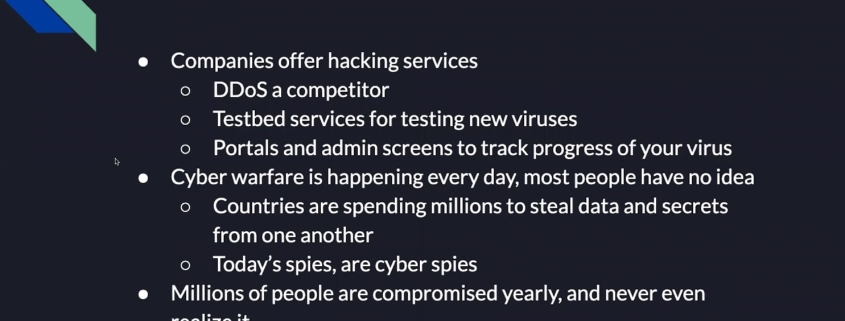High School students learning cyber security training through paid internship with VMI
LEXINGTON, Va. – The Virginia Military Institute is helping high school students better understand cyber security through a paid internship program.
Seven local high schoolers are currently participating in this fully immersive program and are gaining a better understanding of cyber security by working with VMI Cadets.
The students come from Rockbridge County High School, Parry McCluer High School and a homeschool group. They meet every day after school for two hours to work on two separate projects.
The first project they have been working on is called the Internet of Things Box, which represents the smart interconnected devices people use at home and work. Interconnected devices include items like a web camera, smart outlets, Google Homes or an Alexa.
With this project, the students learned the secrets of the networks and devices, built them by hand and then attempted to hack them.
Ad
“The students are learning new stuff and trying to figure out those hard problems with a little push from my team, but a lot of this is on their own,” said Cole Corson, a VMI student. “They are really self-motivated. They have to go out there and figure out what the solution is to their problem and that’s what I think is the core and the best part about this program. It teaches them how to go find the answer to their problems themselves, and in the pre-science world, computers and the internet help with that a lot.”
The second project students are working on is called the “Turnout” app. This app is designed to provide cadets with notifications that have information about cyber events. Students worked with cadets to learn, design and develop complete software programs.
“Cyber security and programming and all this computer stuff is my hobby,” said Jonas Squires, a homeschool student participating in the program. “It is what I do at home, and so the opportunity to do it here with all sorts of technology that I don’t have access to at home and learn new things was just an opportunity that I couldn’t pass up.”
Ad
This program is in partnership with Virginia Tech. Two Virginia Tech graduate students brought innovative tools to the internship site.
This experience is allowing a younger…



